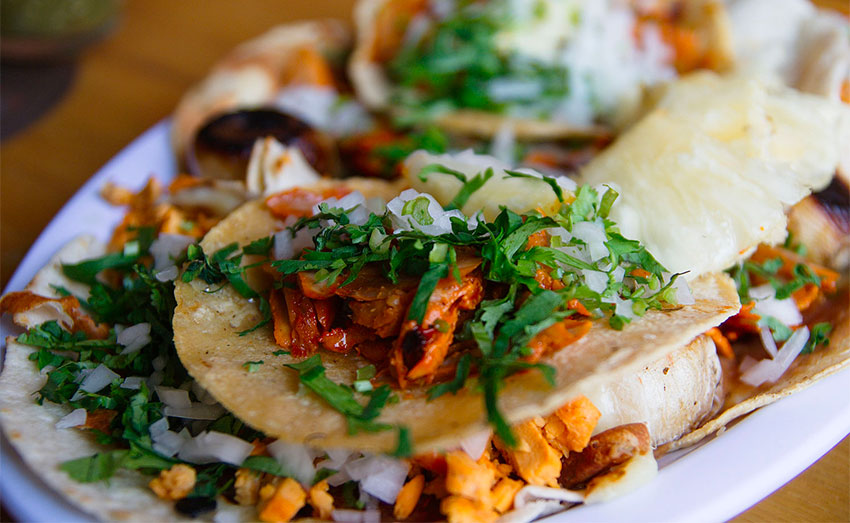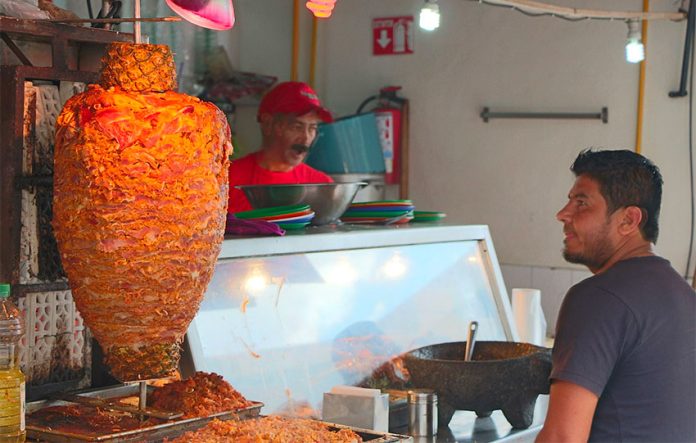Mexico’s most popular taco originated in the Middle East but why they should be called “shepherd’s tacos” is anybody’s guess.
In the United States, classic dishes with immigrant roots are almost a given – hot dogs and hamburgers (Germany), pizza (Italy), fortune cookies (China), and so on.
However, the same cannot be said for Mexican cuisine. There is this idea that Mexico is a timeless land, whose identity was forged in the colonial period and has been preserved ever since.
Although smaller in numbers, Mexico does have a history of immigration that continues to affect the country’s cultural development.
One of the more unusual immigration stories concerns people from the Middle East, now often referred to as Lebanese. This migration started as early as the 19th century from an area then known as “Greater Syria.” Here, non-Muslim families often sent children abroad to avoid conscription in the Ottoman Empire, and some made their way to Mexico.

Such immigration increased in the first decades of the 20th century as the empire became unstable and fell. In 1943, much of the region became the country of Lebanon.
Most were Arabic-speaking Christians, and they brought with them the technique of roasting sliced meat on a vertical spit. This is common in the Mediterranean Middle East and known by various names such as gyro, döner and shawarma. The original dish is lamb, pita bread, vinegar and various spices.
After this, the story gets murky. The immigrants settled in various parts of Mexico, with the majority in Puebla and Mexico City. In Puebla, they began selling the spit-roasted meat, with some places such as Taquería Bagdad becoming institutions by the 1930s. Family stories taking credit for the creation of tacos árabes abound. These tacos are still popular in Puebla, where the spicing remains Middle Eastern, but the meat is now often pork.
The dish was served in Mexico City as well, especially in the La Merced area where many of the Lebanese lived. The evolution of taco árabe to taco al pastor most likely occurred in Mexico City. Non-Lebanese taco places began to adopt the use of the vertical spit but modified the dish.
In addition to pork, other substitutions included achiote and chile pepper for the original spices, corn tortillas for the pita. Additions include onion, cilantro, pineapple and salsa. It is unknown why pineapple came to be included although some swear that it is important for proper digestion.
Another unknown is why it is called “al pastor” (shepherd’s) as pigs are not herded like sheep.
Tacos al pastor as we know them took form by the 1960s, with various families and businesses in Mexico City taking credit for their invention. Al pastor is an anchor of Mexico City cuisine, but árabe is not so easy to come by. In Puebla, al pastor competes with árabe.
Recipes for al pastor vary. Many places jealously guard their version, especially the marinade used for the meat. The pork is cut into thin sheets along the grain, much like the cut for milanesa (thin cutlets). The sheets and onion slivers are marinated, then stacked over the spit. Then a peeled pineapple is skewered on top, in part to keep the meat pressed. The spit is placed and rotated exactly the way those for gyros and döners are, with cooked bits cut off and served on tiny corn tortillas, usually in orders of five.
While tacos rule, al pastor can also be used to make tortas (Mexican subs), alambres (meat with vegetables) and gringas (meat and cheese layered on flour tortillas).
The popularity of al pastor can be attributed to its mild taste — before salsa is added, of course. But it is also a kind of show. Spits are almost always found in prominent places where perspective diners can see and smell the meat being cooked as well as the artistry of the taquero at work. An important talent for these cooks is to be able to cut a small piece of pineapple from the top of the spit and have it land perfectly onto the taco below.
Since becoming popular, it has spread to the rest of the country, where it may be called tacos del trompo (top, as in the toy) or tacos de adobada (marinated). It has become the most popular taco variety in the country by far. Its reach continues to grow, crossing the border into Mexican restaurants in the United States, and there is even one restaurant serving it in Beijing.
The Lebanese have not only contributed Mexico’s favorite taco to the country. Today, there are over 400,000 Mexicans of Lebanese heritage, with a reputation for business acumen. Latin America’s richest man (and fifth richest in the world) is Carlos Slim Helú, a first-generation Mexican, whose parents were Lebanese immigrants.
Leigh Thelmadatter’s culture blog appears weekly on Mexico News Daily.
